NatureZen: A Butterfly Top Ten
words and photos by Melissa McMasters
As the mornings finally start to turn crisp, I get a familiar feeling. It happens every fall: I’m so grateful to make it to the end of another long summer, to feel everything slow down a bit, to experience the air as a gentle friend and not a rampaging humidity monster. But there’s always a melancholy aspect to welcoming this time of pause. I know it means that butterflies won’t be a regular part of my days for several months, and I start missing them even as the last sulphurs and checkered-skippers drink the fall asters dry.
As I’ve spent time in our new pollinator garden this year, I’ve lost count of how many people have approached me to say that having a place to spend time with butterflies has given them a light in a world that can feel full of darkness. Whether we seek them out or stumble upon them, butterflies always capture our attention, reminding us that there is still beauty to see and to nurture. This year, I’ve been lucky enough to have many memorable moments in the company of butterflies, and I’d like to share my favorites with you here, in order of occurrence.
1. A January forest walk in Trinidad and Tobago started the year off with a wild one-two punch. My tour group had gotten up at 3:00 AM, driven across the island, waited for half an hour with no sign of the secretive birds we were seeking, and then decided to trudge down a steep and muddy hill to see if they were in the forest. I quickly got distracted by butterflies, but the best was still to come. After we’d located the guans and watched them until they tucked in for the day, we started back up the hill, and a flying bit of blue glass caught my eye. It was an agnosia glasswing, the first species I’ve seen with truly translucent wings. I was spellbound until I heard one of our guides shouting my name; he’d found a widespread eighty-eight perched on a leaf! When I was little, my grandma had given me a book of butterflies, and the eighty-eights were a subject of much fascination. Bugs with writing on them! I never imagined I’d see one for myself, and I couldn’t believe it happened within 60 seconds of seeing a glasswing.
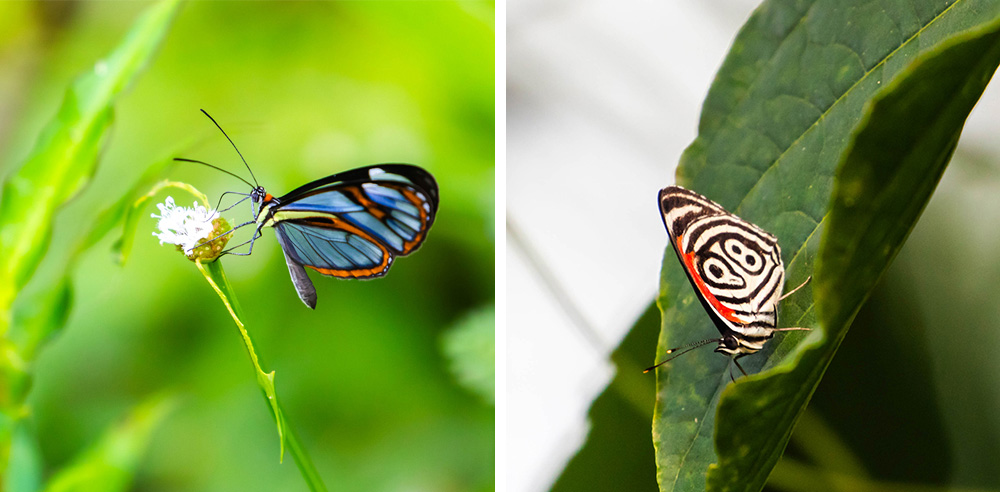
2. Back home, when February flips to March, the Old Forest floor always has my attention. The wildflowers are starting to blanket the ground, soaking up their annual allotment of sun before the trees leaf out, and the native bees are taking full advantage. But then I remember to look up. This year, I was rewarded with a duo of mourning cloaks, butterflies that blend right in with tree bark but stand out against the sky. These were the first butterflies to land on my hand unprompted after I first started paying attention to insects, and they have a special place in my heart.
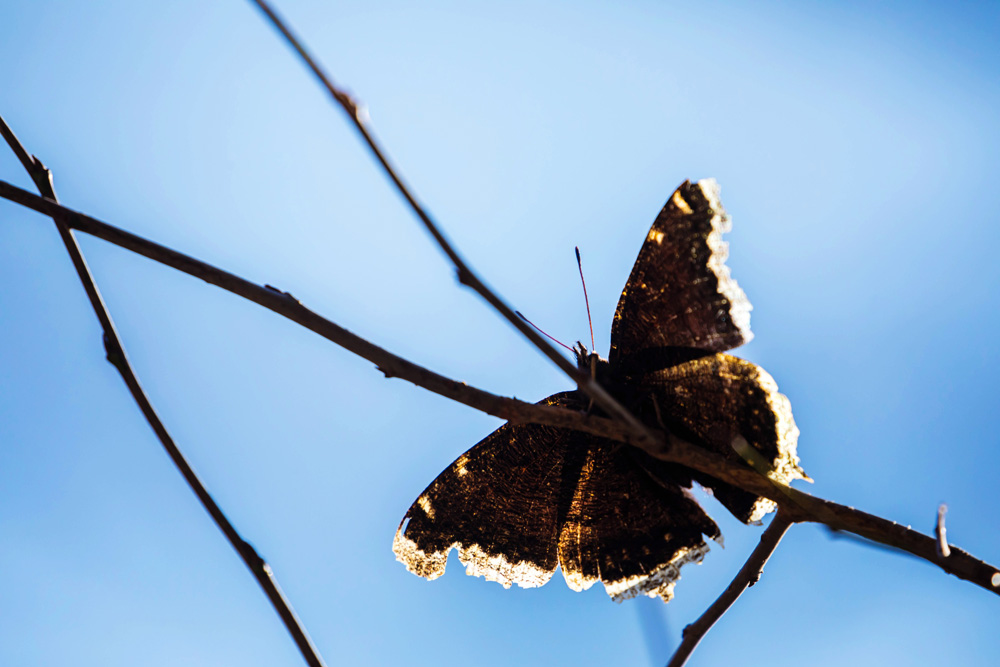
3. In March, my Conservancy colleague Kim and I defined “spring break” as visiting the spectacular wildflower bloom in Anza-Borrego Desert State Park in California. We saved the flower fields for the end of the day, when the crowds had thinned out, and spent the morning hiking up a canyon in search of Sonoran blues. These butterflies are the only members of their genus, and their wings look like a desert sun rising in a sky dotted with storm clouds. We were thrilled to find that they were abundant in this canyon, although they weren’t particularly interested in holding still for photos. Some other butterfliers even stopped us to show us some eggs they’d found on the blue’s host plant, a succulent known as liveforever.
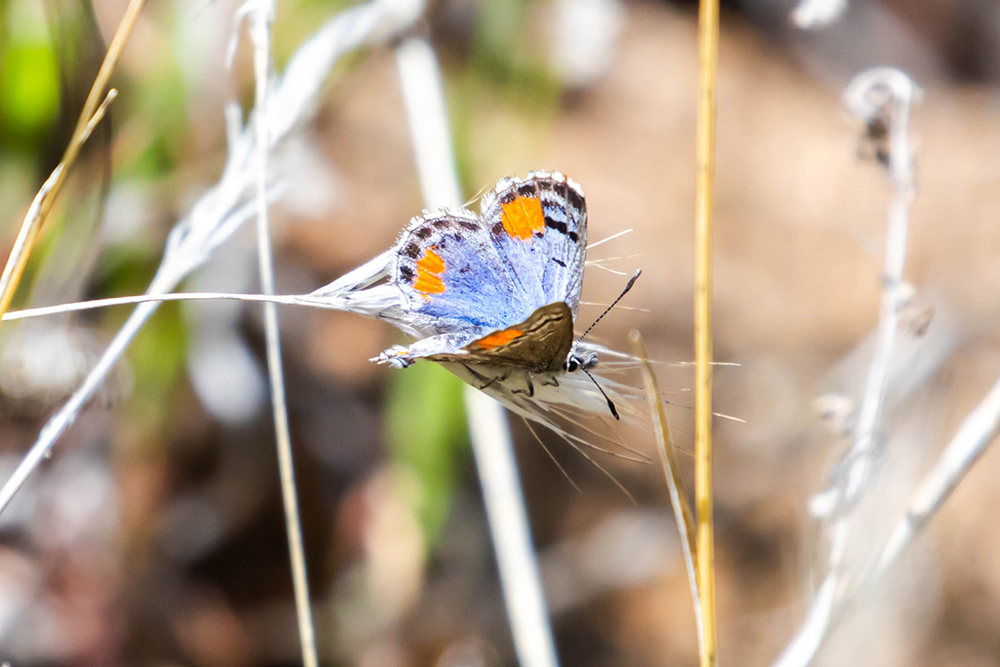
4. In that canyon in California, we saw lots of orangetips, although none of them ever perched. This has been my experience with most butterflies of this type, including our local falcate orangetips. They move from one mustard plant to another, barely stopping to take nectar. (Chasing orangetips is a wonderful way to get your steps in. While cursing.) This year, however, Kim and I found a patch of forest in Shelby Farms Park that was bursting with mustard plants, and the sheer numbers of butterflies meant that we finally caught a male sitting still for a few seconds. I’ve always appreciated the marbled wings of this species, but this encounter called attention to the way its orange-and-white forewing echoes the colors of its preferred flowers, which are used by both adults and caterpillars.
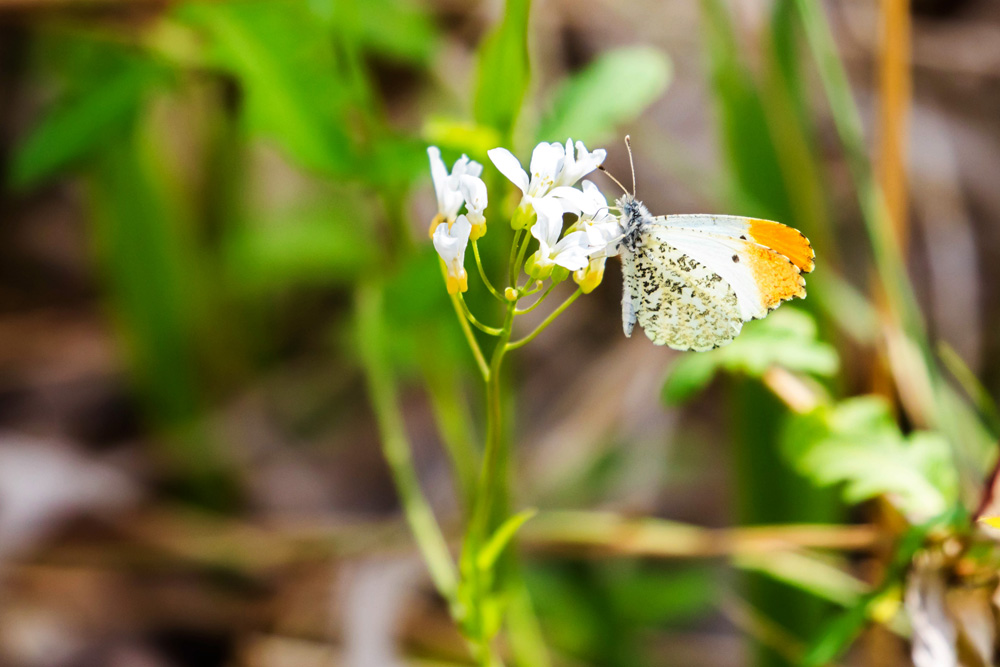
5. For the past twelve years, I’ve had the privilege of helping out on North American Butterfly Association counts in Meeman-Shelby Forest State Park and other locations in West Tennessee. A group of volunteers spends a day in the field, surveying the same area at roughly the same time each year to see how the numbers of butterflies are changing over time. It’s always a treat when the Meeman-Shelby count brings us across a harvester, which like the Sonoran blue is the only member of its genus. Unlike virtually every other butterfly in North America, the harvester’s caterpillars are carnivores, feeding on aphids. We spotted this male in a parking area, watching for females to fly by.
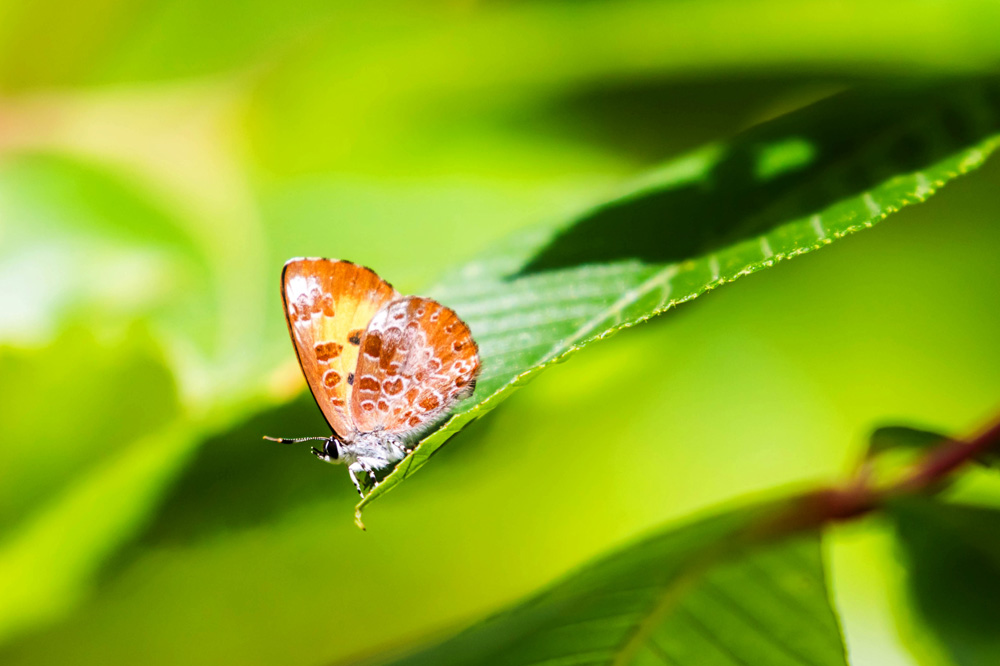
6. Talk about a butterfly that arrives with a blaze of glory! The Diana fritillary is one of the largest butterflies in North America, and it’s only found in the Appalachians and the Ozarks. Despite our location in between these two mountain ranges and a dozen years of trying, I had never seen one until this May. Adult Dianas like to nectar in open areas, but they won’t breed without a healthy forest full of violets for their caterpillars to eat in the spring, and these differing habitat requirements really limit the number of places the species can be successful. I finally stumbled on a wildlife management area in Arkansas that fit the bill, and it took no time at all for me to find several males out in the open. I feel quite lucky to have spent time with these butterflies; as you can imagine, a creature that can only live in very specific areas is much more vulnerable than one that can survive in a variety of environments.

7. I could have filled this whole missive with butterfly memories just from our pollinator garden at Veterans Plaza (and I did, to some degree!). But seeing the monarchs we were hoping to attract nectaring and laying eggs on milkweed was such a powerful moment: we can turn even small spaces into difference-makers. And we’re going to keep doing it: the Conservancy and the Memphis Zoo just received a grant to continue the existing pollinator project and add quite a bit more habitat in the park’s southeast corner next year!
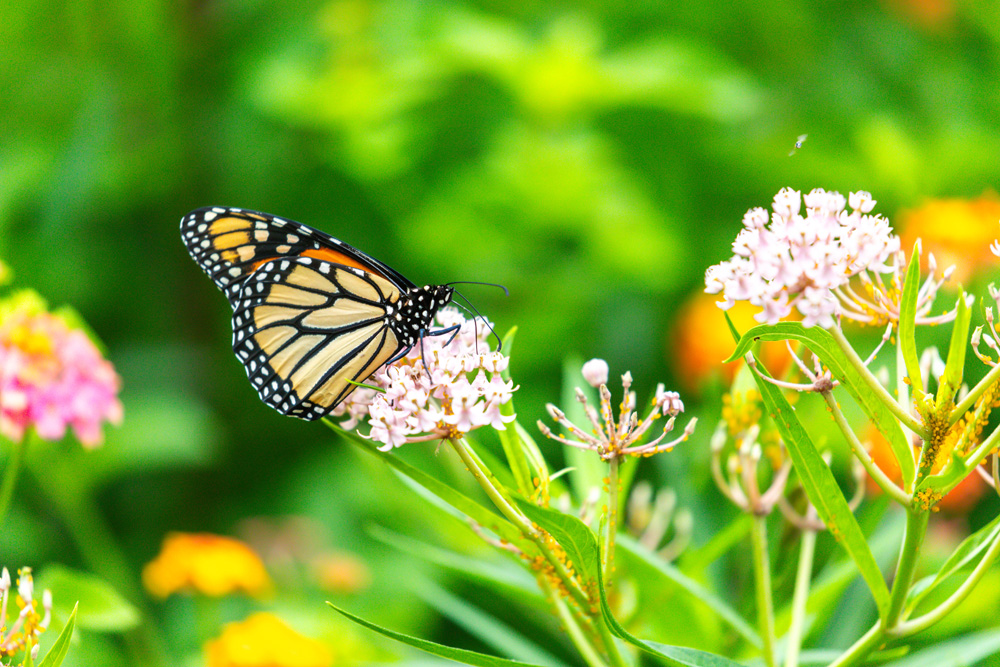
8. In August, I visited the Outer Banks in North Carolina with my brother’s family, and our rented house happened to have a lush pollinator garden in the background. On the last morning as we were getting ready to leave, I stood out on the back balcony with my nine-year-old nephew, watching and talking about monarchs, Palamedes swallowtails, bees, and moths. My nephew was enjoying himself enough that he went back for a second piece of breakfast pizza and came right back out to watch some more, and then his two-year-old brother joined us to announce happily that there was a bird on the fencepost.
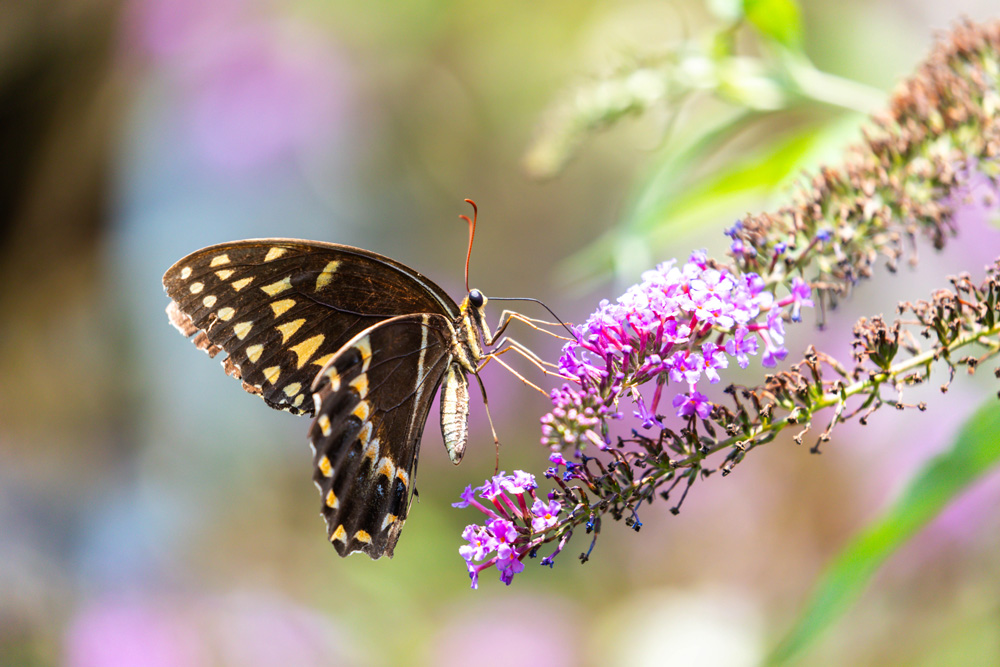
9. In September, my colleague Fields and I visited southern Spain on a tour focused on seeing Mediterranean butterflies, including some African species that cross the Strait of Gibraltar. Our target one morning was the two-tailed pasha, a stunning member of the leafwing family. It was pretty late in the flight season, but we were hopeful to get a good view after seeing one fly past the car on the way to our hillside stakeout. And then we waited, and waited, until I felt like Linus wondering if the Great Pasha would ever appear in our very sincere pumpkin patch. Then came some excitement from up the road, and we had our butterfly! For a good long while, too–while it changed branches a time or two, this individual gave us a solid half-hour show on the way to becoming the most photographed and adored butterfly in all of Andalucía.
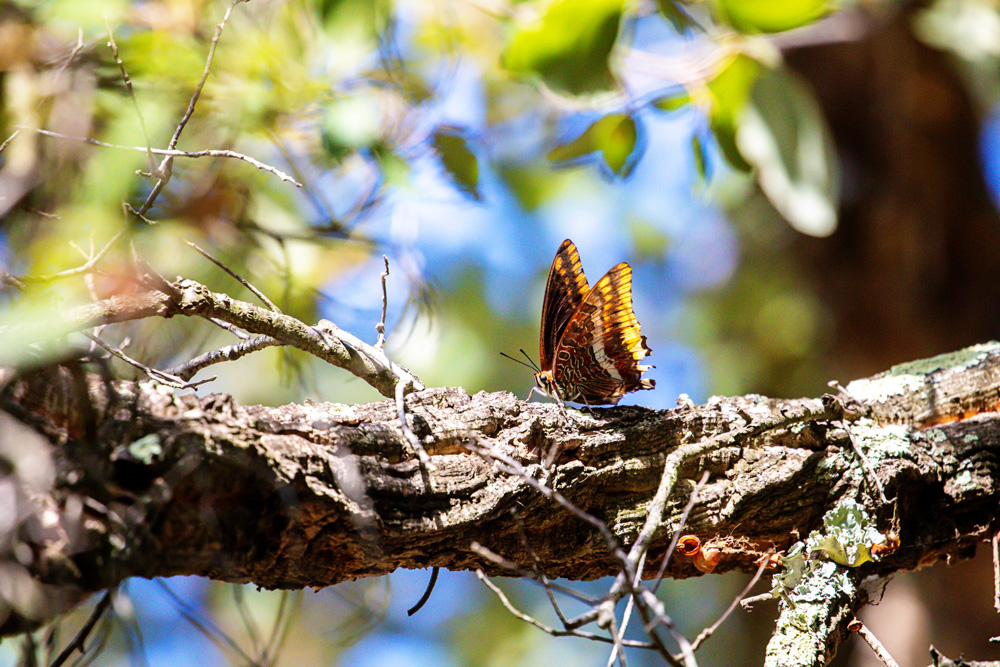
10. And finally, every fall I head down to the Lower Rio Grande Valley in Texas, where butterfly migration is in full swing and a variety of South Texan and Mexican specialties are flying. I never have time to visit all the places I want to go, and this year I’d decided to skip one particular out-of-the-way park where my favorite Texas butterfly is found. And then I ran into one anyway, the first time I’ve seen a blue metalmark outside the one small garden where I usually find it. The way the sun shines on this butterfly is unlike anything else, and it’s a slow feeder that invites lengthy contemplation. Which is exactly what I did, with gratitude that such a rare gem decided to cross my path.
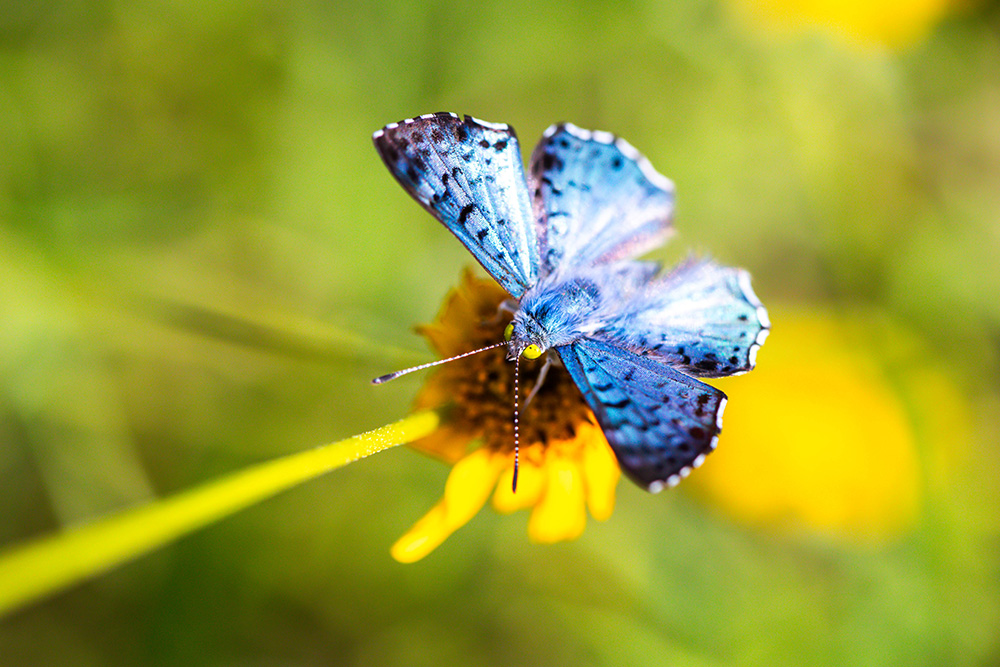
One thing I noticed while looking back on these memories is that so many of them occurred in the company of other people. From my friends and family, to the people I met in Overton Park, to new friends from all over the world, so much of my delight in the butterflies came from sharing these experiences. Thanks for letting me share them with you today!



